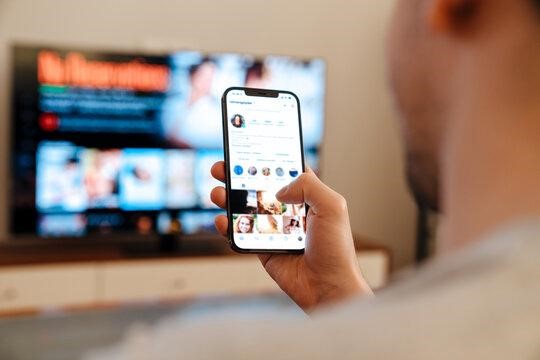UM’s Ben Tuff examines the future of screen impact in a multiscreen world and why there is a need to establish more clearly how these screens come together to drive a complete ecosystem.
The speed of digital adoption across APAC is dramatic and the region’s consumer internet has never been a homogenous one. Fragmentation of the internet has become key to how marketing, media and businesses must navigate this critical touchpoint for consumers. The abundance of platforms and points of integration, where local players have become giants in their own markets and globally, has accelerated – Grab, Line and TikTok have all expanded beyond their national boundaries.
The proliferation of AR solutions and now the metaverse create yet more touchpoints (in the case of the metaverse, a touchpoint in which multiple touchpoints might exist), giving marketers something of a headache. Increasingly challenged by CFOs and other stakeholders about what is and isn’t working, they are asking questions about what to measure, how to measure and what is meaningfully measured.
Screen stacking has become more complex
The duplication of activity driving up screen use was first recognised in the mid-2010s in a report from Millward Brown (now Kantar). Nearly 10 years later, the importance of cross-screen synergies is now a ready part of media planning and measurement. The uplift gained from two screens is greater than the sum of the parts.

Street in Mongkok, Hong Kong
Since the concept of screen stacking was introduced, screens have become more complex, with new forms of advertising within those screens. And a new type of screen has emerged: the metaverse headset. This screen will need to be considered as part of the new frontier of screen use.
As we look at the fragmentation of attention and new screen usage, we need to establish more clearly how these screens come together to drive a complete ecosystem. While real-world choices will drive metaverse messaging and vice versa, the expansion of metaverse capabilities means there will be a need to measure the impact of offline, online, and inline interactions and activities.

Measuring screen stacking
With more screens generating more places to look, marketers should consider how they can drive true incremental reach. They need to do it in a way that explores, leverages and measures attentive reach, which happens when a consumer sees an ad and interacts with a message.
Marketers should be measuring maximal attention, defined not just by reaching the widest possible audience, but by maximising the attention garnered from all screens. It’s through measurement that marketers can better understand what a small-screen device does to drive incremental attention once consumers have interacted with the large-screen message.
Such thinking challenges the convention of merely maximising reach using the widest possible media touchpoints. Each screen is treated the same but as the work of globally acclaimed media science researcher and author of “The attention economy and how media works”, Karen Nelson-Field, shows, different screens create different levels of attention and drive different levels of short-term business outcomes.
NeuroInsight, a global brand and communications research business, demonstrated that the long-term impact of full attention planning can drive a greater likelihood of brand consideration and ultimately purchase when a consumer is in the market to buy.
As we move toward the future of screen impact in a multiscreen world, minimising distraction for consumers will become increasingly important. Understanding the role each screen plays in driving the business outcome will be required. That’s a huge challenge. When measurement measures the impact of a channel, it is not considering the screen on which the message is displayed – it is not considering whether the message resonated on a mobile device as a YouTube pre-roll or an OTT TV channel on a large format TV.
The time spent and the attention given will change. ROIs will shift. Channels that may previously have had a lower ROI may suddenly jump or decline. What’s important will be the role various screens have in driving the short and long-term impacts of marketing investment. It should be noted this is not about channel but the way in which that channel is presented. Without that understanding, there will be massive misattribution of the impact of screens or, at the least, a misunderstanding as to why one type of screen is working better than others.
If marketers are to focus on the attention derived from a campaign, they must plan for attentive reach, not just total reach.
Marketers and, increasingly, channel owners, will need to determine the role various screens have in delivering their messages and the attention those screens can garner. Brands need to think beyond reach to understand how a campaign can be optimised and block screens that deliver less attention. Media planners should pay less for lower-value, lower-attention screens.
This will necessitate wholesale change to the measurement and understanding of media channels. A reassessment of traditional media may be necessary, opening the opportunity for significant improvements in technologies to deliver in those environments. But it will be implicit on channel owners to measure and understand the level of attentive reach they bring.
Planning must include a focus on the metaverse, the newest touch point for marketers. The question remains whether the metaverse will provide a place for marketers to better deliver their message in an attention-rich environment, one in which consumers can engage with brands with a level of attention not seen before. Will it create an environment that is so distracting it can’t hold a consumer’s attention as well as in the real world?
These will be the experiments and measurements we need to begin now to undertake, one in which we are able to deliver more advanced metaverse solutions that intersect with the real world more readily.

